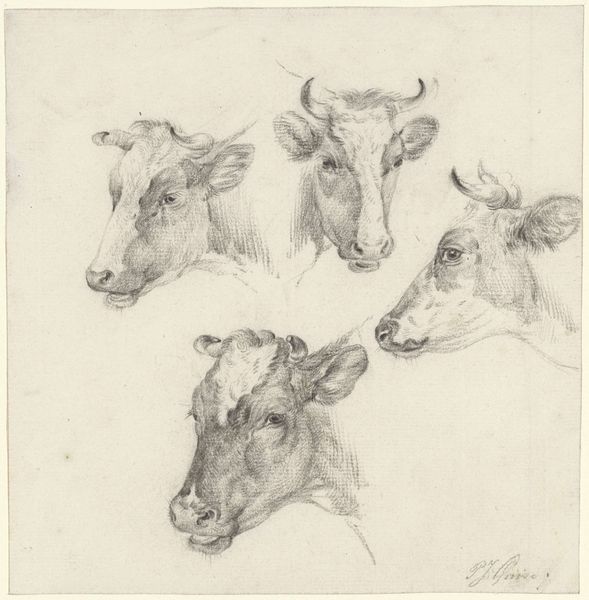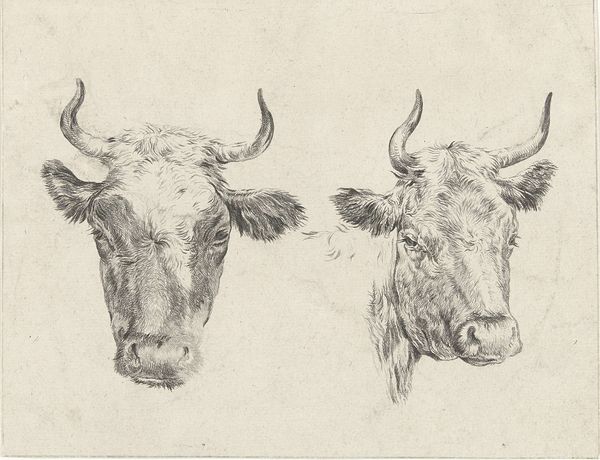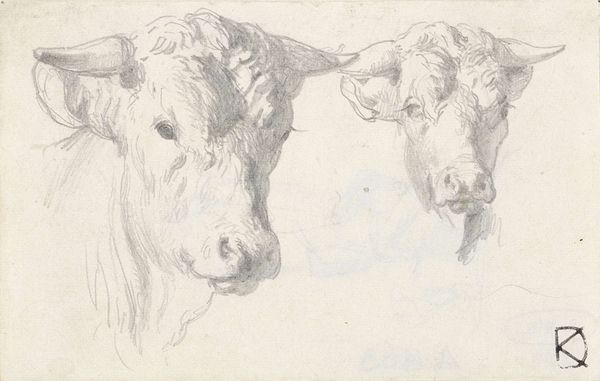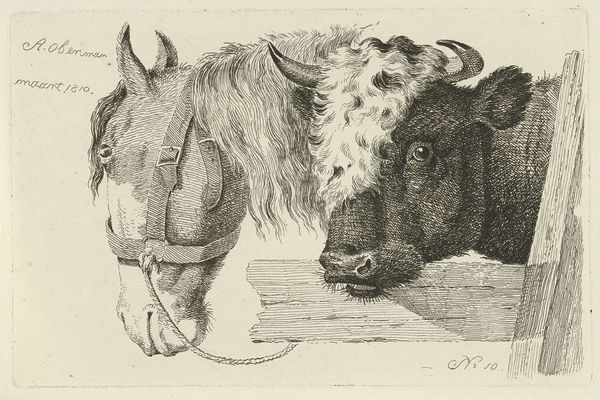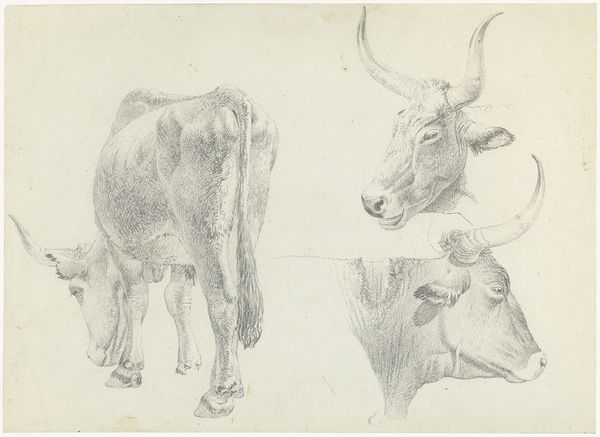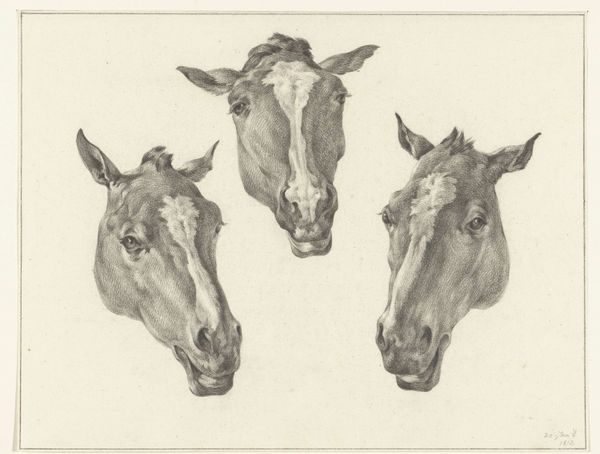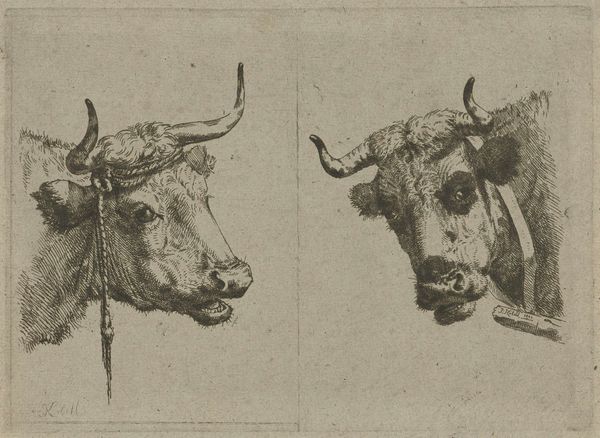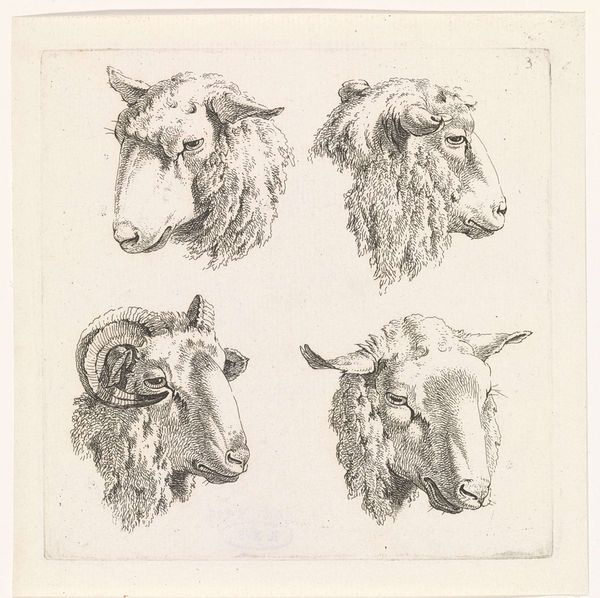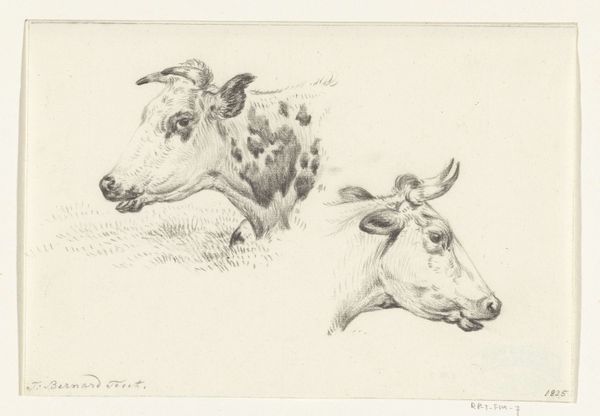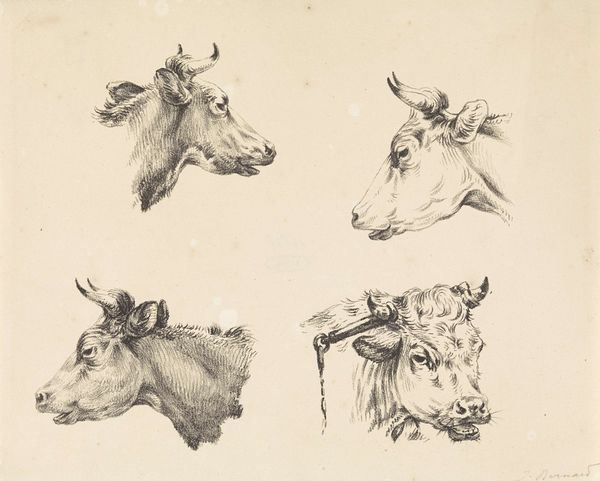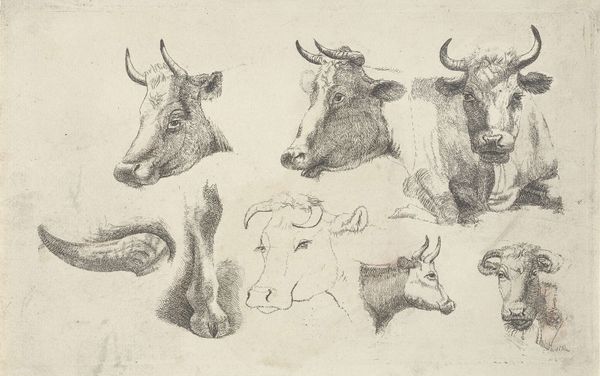
drawing, ink, pen
#
portrait
#
drawing
#
animal
#
pen illustration
#
ink
#
romanticism
#
pen-ink sketch
#
sketchbook drawing
#
pen
#
genre-painting
Dimensions: height 110 mm, width 168 mm
Copyright: Rijks Museum: Open Domain
Curator: Here we have Anthony Oberman’s drawing, “Drie koeien- en een kalfskop,” made with pen and ink in 1809. It’s part of the Rijksmuseum’s collection. Editor: My first impression is one of bucolic tranquility—a pastoral scene rendered with impressive detail using just pen and ink. Curator: Indeed, Oberman captures the individuality of each animal. During the Romantic era, there was growing interest in rural life and the agrarian landscape as places of unspoiled authenticity. This drawing invites us to contemplate humanity’s complex relationships with animals and agriculture in the 19th century. We must acknowledge how the idyllic representation of animals often obscures the realities of animal husbandry and the exploitation of the natural world for profit and human consumption. Editor: I am struck by the textural variation he achieves with line work. The hatching and cross-hatching define the forms beautifully. The contrasting dark and light areas help accentuate the different planes. I am especially fascinated by how Oberman uses such a limited palette to evoke form and dimensionality in a manner that feels immediate, vivid, and convincing. Curator: Consider the historical context of early 19th-century Netherlands. As agriculture modernized, anxieties surrounding human impact on nature rose. Oberman’s choice of subject might also allude to social dynamics. Historically, owning livestock like cattle could represent prosperity and status, particularly in agricultural societies. So it seems worthwhile to explore class structures of that time by looking at the representation of this animal in art. Editor: Absolutely. And notice how Oberman strategically frames the composition. It creates a balanced distribution of visual weight. There are no areas that feel neglected, and each of the animal heads are presented with remarkable clarity, given the modest format. Curator: Looking at Oberman’s portrayal, I find myself contemplating shifting historical relationships to the natural world. It prompts reflection on how power imbalances, colonial structures, and unsustainable consumption patterns have contributed to the exploitation of animals and ecological degradation. Editor: Ultimately, “Drie koeien- en een kalfskop” exemplifies how a simple genre painting of cows can become an aesthetically engaging subject in its own right. Curator: A reminder that art can indeed serve as a mirror to society and nature, provoking introspection and inviting discourse.
Comments
No comments
Be the first to comment and join the conversation on the ultimate creative platform.
